
Visiting Sarajevo was an enriching and memorable experience. Even though I am a seasoned traveller who has already traversed across a sizeable chunk of this crust, Sarajevo impressed and inspired me. This city gave my accumulated travel experiences another exotic dose of red hot spice. Sarajevo is sometimes referred to as the “Jerusalem of Europe” owing to its rich multi religious and cultural history.
I stayed at a modest but homely and warm family guesthouse located up on a hill in the Bistrik district south of the Miljacka river and only a few minutes walk from the Ottoman era Baščarsija old bazaar district. This historic district was constructed in 1462 by the Ottoman Empire general Isa-beg Ishaković just after the Ottomans arrived. Before they arrived, the biggest settlement then in Sarajevo was a village square called Tornik located today at the junction between Marsala Tita and Relisa Dzemaludina Čauševica streets where the Ali Pasha mosque is situated several blocks west of the Baščarsija district. Ishaković built a mosque named “Careva Džamija” (the Emperor’s Mosque) in 1457, which is the oldest mosque in Sarajevo. The original structure was destroyed by the end of the 15th century before being rebuilt in 1565.
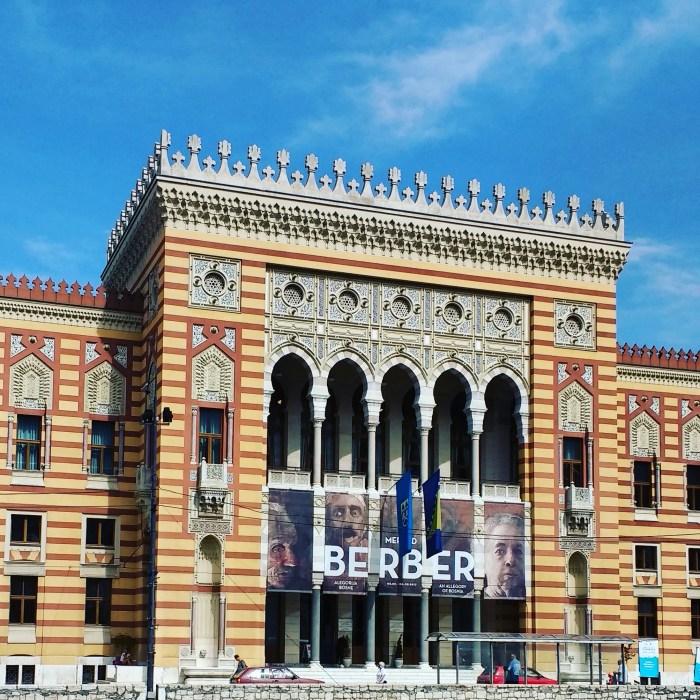
Sarajevo City Hall
Crossing over the Miljacka river and walking past the large Moorish style City Hall building, I commenced my adventure through the old Baščarsija streets. Most of the places along the first street I walked across are small eateries selling bureks; spiral pastry pies filled with potato, meat, cheese, or spinach and even pumpkin. On my first evening in Sarajevo, I took a chance on an authentic looking burek place with a magnificent open coal oven where the bureks and other specialities are cooked in large closed circular pans covered in crushed coals. The bureks here at Buregdžinica Asdž are very good and cheap.

Buregdžinica Asdž: Great burek eatery in the Baščarsija district
I venture down another smaller street and the oldest street in Baščarsija named Kazandžiluk street, better known as “Coppersmith Street” where small shops sell copper cups, plates, bowls and tankard-like jugs. Walking through this street feels like walking through one of London’s medieval streets around Fleet Street or St Bartholomew’s church with an Arabian tinge. At the end of this street there is an antique wooden coffeehouse where you can drink authentic Bosnian coffee.

Coppersmith Street: the oldest street in Baščarsija

On Coppersmith street
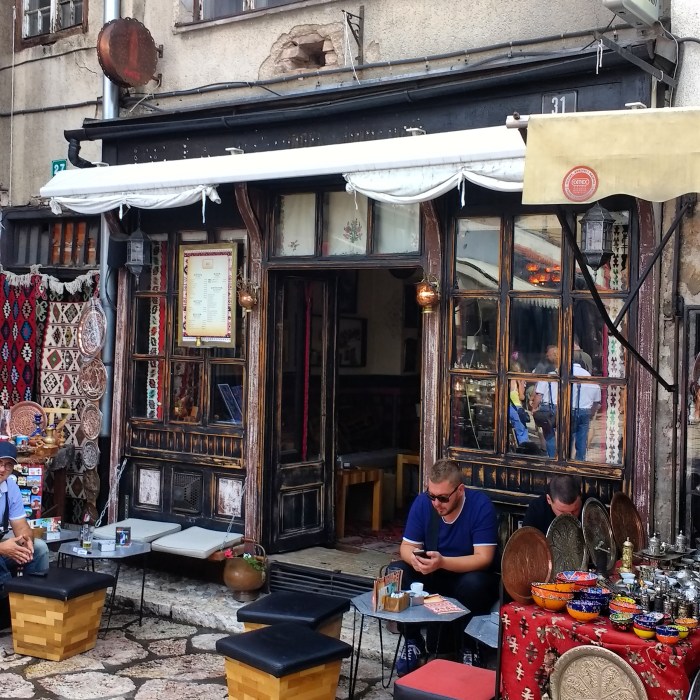
Wooden coffeehouse on Coppersmith street
Anyone who visits Baščarsija will unavoidably cross paths with the main square or Pigeon Square as it’s sometimes better known as, because of the large concentration of pigeons at any given moment just like in London’s Trafalgar Square. In the middle of this square is an old Ottoman style wooden fountain called the Sebilj. It was originally built by Mehmed Pasha Kukavica in 1753 and then in 1891, during the Austrian-Hungarian era, it was repositioned by the Austrian architect Alexander Wittek.
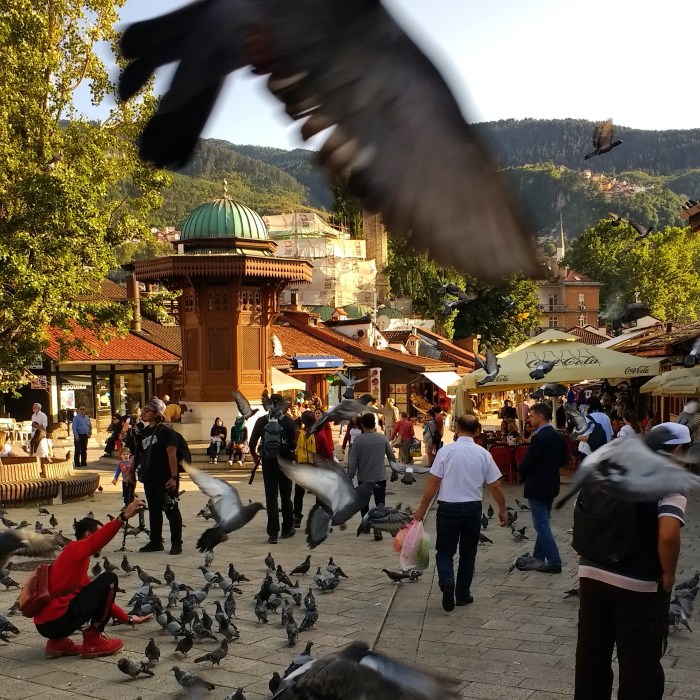
“Pigeon Square”: The main square in Baščarsija
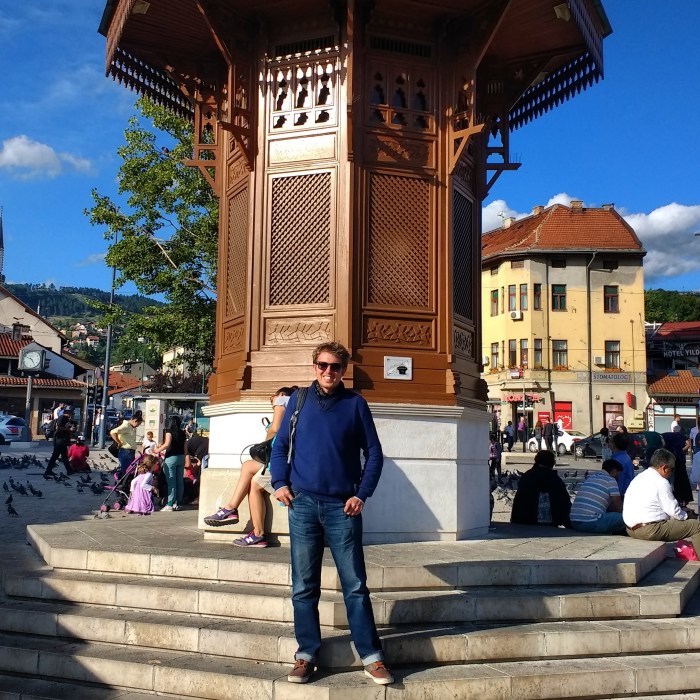
By the Sebilj
Close to the Sebilj on Mula Mustafe Baseskije street is the old Orthodox Church of the Holy Archangelo Michael and Gabriel. It is a Serbian Orthodox Church and the oldest church in the city dating back to 1539 (although it’s original structure may date back even earlier).

Old Serbian Orthodox church: The oldest in the city dating back to 1539
An integral part of my experience in Baščarsija was delving into the area’s history associated with Gazi Husrev-beg. Gazi was born in 1480 in Serres, Greece where his father, Ferhad-beg, was a governor. From 1521 until his death twenty years later in 1541, he was the Ottoman governor of Bosnia and had contributed immensely in the establishment of the city of Sarajevo. By the time of his death, Sarajevo had already developed into a thriving and successful trading center at the crossroads between east and west. He had invested most of his fortune (his endowment or ‘waqf’) towards the development of the city and was a great philanthropist and humanist who cared deeply about the welfare of his people.

Gazi Husrev Beg mosque: built in 1531 and the largest in the country
The most notable landmark associated with Husrev beg is the Gazi Husrev beg mosque built in 1531 and located in the heart of Baščarsija. It is the largest mosque in Bosnia and Herzegovina and an outstanding example of Ottoman architecture from that time. Within the mosque compound in the courtyard is an old fountain (‘shadirwan’) similar to the fountain in the main square yet this fountain is over 200 years older dating back to 1530. Situated on the west side of the mosque is the tall stone Sahat Kula clock tower built in the 17th century. It was restored after being damaged in a fire in 1697. The clock shows the lunar time meaning that the day ends at sunset after which a new day begins. Close to the clock tower, there is a water system created by Husrev beg for the city (he also built a public toilet in 1529 which back then was very rare) where the water was transported via ceramic pipes from a wooden aqueduct under the ground. Even today the water system is still in operation and locals (and tourists) continue to come to the fountain to drink the water. I drank from the fountain and I have to say that the water is some of the purest and freshest I’ve ever tasted. Also within the mosque complex is Husrev beg’s mausoleum.

The Sahat Kula clock tower
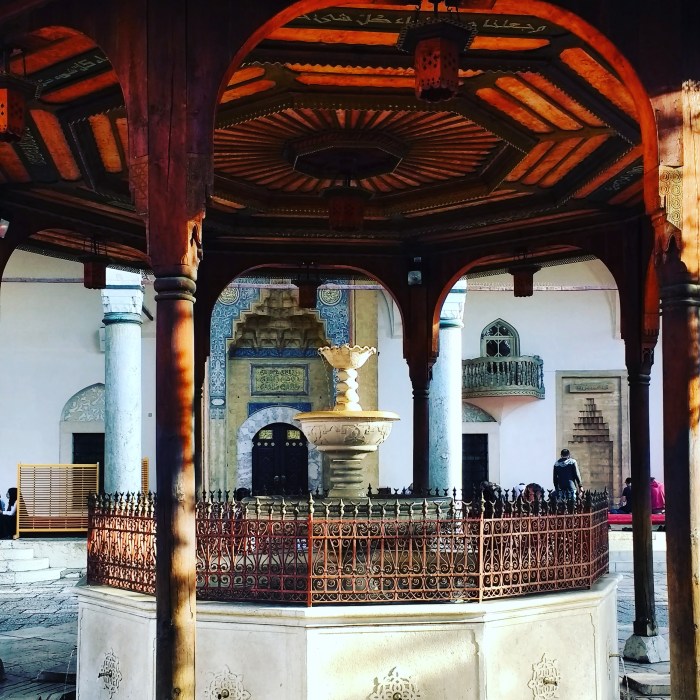
The old ‘Shadirwan’ fountain by the Gazi Husrev Beg mosque dating back to 1530

The mausoleum of Gazi Husrev Beg

Drinking from the Gazi Husrev Beg fountain. The water is excellent and comes from the oldest water system in the city dating back to 1529 and engineered by Gazi Husrev Beg
Opposite the mosque is the Ghazi Husrev beg Madrassa (or learning institute) built and established in 1537 for the education of the local population. Husrev beg stated that any money remaining after the madrassa had been built should go towards buying good quality books for the madrassa. Today the collection of those original books is housed in the new modern Gazi Husrev beg library which opened in 2014 and was financed via a $8m grant from Qatar. Within the old madrassa complex is the small Ghazi Husrev beg Museum, which is an excellent place to learn and understand more about him and his unique and generous contribution to the city of Sarajevo.
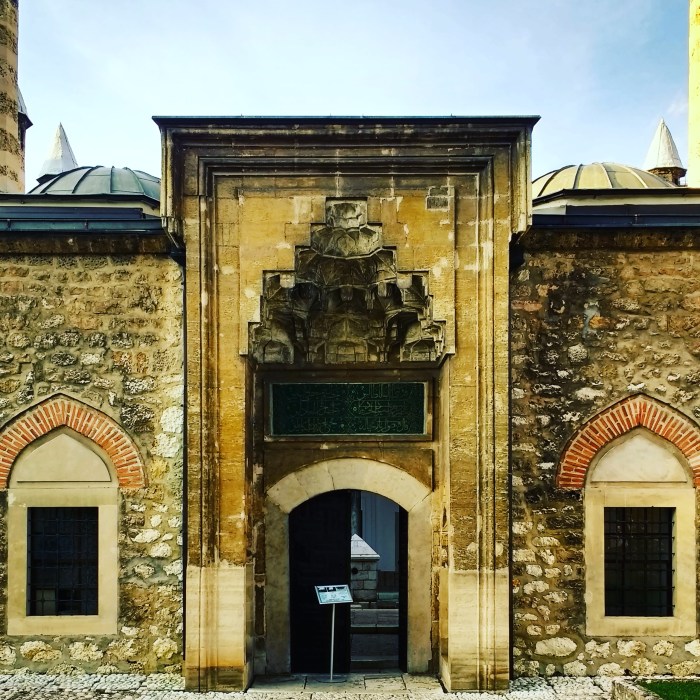
By the entrance of the old Gazi Husrev Beg Madrassa which today houses the Gazi Husrev Beg museum

Gazi Husrev Beg museum

Gazi Husrev Beg library
Yet the Gazi Husrev Beg journey isn’t over yet. Halfway between the mosque and the Sebilj is the Morića Han which was a ‘caravanserai’ or roadside inn. In its day it was able to accommodate as many as 300 travellers and 70 horses. It was built in 1551, 11 years after Gazi’s death, and funded using his endowment or ‘vakuf’. Since during this time Sarajevo was an important international trading centre, it was important to establish lodging facilities to accommodate travelling traders who travelled long distances via their horses often from other parts of the Ottoman Empire (which around the time the inn had been built had covered all of modern day Turkey and other parts of the Middle East, North Africa and almost all of south Eastern Europe). Today the Morića Han is transformed into a lovely historic courtyard with cafes and a small market bazaar selling textiles and various crafts.

By the outside of the old Morića Han

Inside the courtyard of the Morića Han
Heading towards the western edge of Baščarsija is Gazi Husrev Beg’s Bezistan which is an indoor bazaar. The original structure of the bazaar was likely built around 1540 financed via Gazi’s endowment. During the period of the Ottoman Empire, the shops inside the bazaar traded textiles. Running parallel to the Bezistan is the old goldsmith street (Zlatarska) today known as Gazi Husrev Begova street where goldsmiths and jewellery shops owned by metal workers sold gold and silver jewellery.

The entrance of Gazi Husrev Beg’s Bezistan

Inside Gazi Husrev Beg’s Bezistan

The old goldsmith street of Baščarsija
The ruins of the original Tašlihan stone inn, constructed around the same time as the Bezistan to accommodate travelling merchant traders like the Morića Han, can be found in the summer garden of the historic Hotel Europe.

The ruins of the original Tašlihan stone inn
Leaving the Baščarsija and the eastern Ottoman part of the city we literally cross over to the western part of the city over the “East-West: Sarajevo Meeting of Cultures” line.
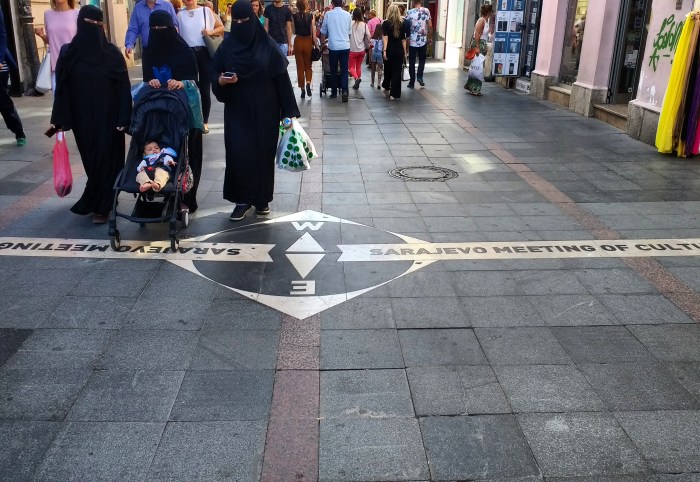
The “East-West: Sarajevo Meeting of Cultures” line marking the border between the Ottoman eastern part of the city and the western part of the city
Our first port of call is the old stone Jewish synagogue built sometime towards the end of the 16th century. Since it’s establishment it was damaged several times before being reconstructed again. The current physical structure of the synagogue dates back to 1813. In 1941 it was raided and occupied by the Nazis and subsequently demolished. The Nazis detained Sarajevo’s remaining Jewish community here before they were taken to concentration camps. After enormous reconstruction, in 1966 the synagogue was turned into the Jewish Museum of Bosnia and Herzegovina.
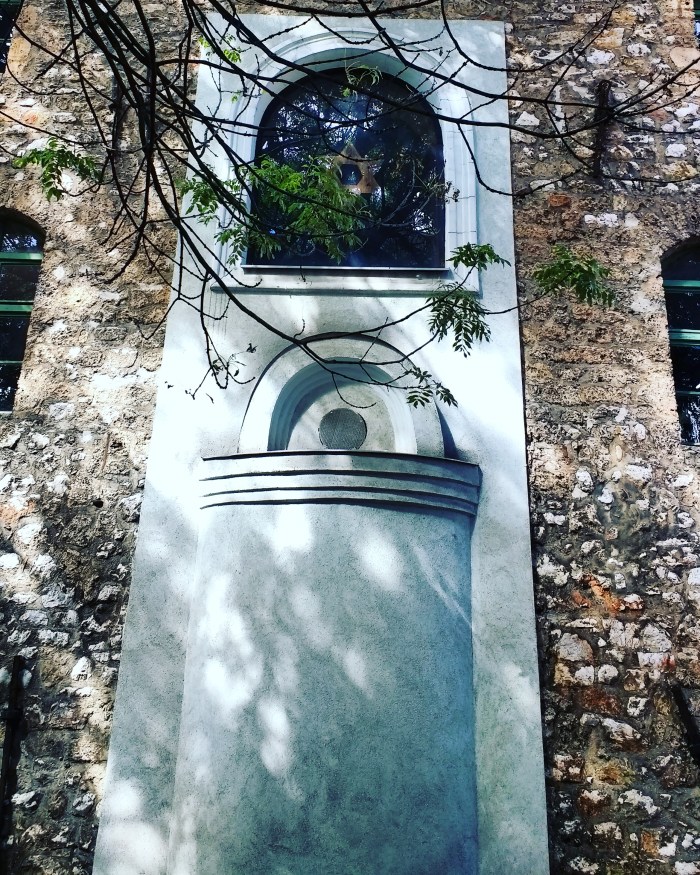
The old stone Jewish synagogue. In 1966 it was turned into the Jewish Museum of Bosnia and Herzegovina
Inside the museum, there are various artefacts and fragments of traditional Jewish life in Sarajevo. There are moving and poignant displays and photographs from the time of the Nazi occupation in Sarajevo. Some of the written displays include stories of gifted Jewish teachers and intellectuals in Sarajevo whose lives were cut short by the Nazis. There is one black and white photograph from 1941, when it was a very dangerous time to be a Jew in Sarajevo (as in many other parts of Europe), showing a Jewish mother and her two children walking alongside two Muslim women. The Muslim woman in the right of the photograph is covering the Jewish woman’s Star of David symbol which she is wearing on her left arm.

Paraphenalia in Sarajevo’s Jewish museum dating back to WW2 when the Nazis occupied Sarajevo and the city’s Jewish population was rounded up and sent to concentration camps. The postcards in the photograph are postcards from the concentration camps

Black and white photographs of captured Sarajevo Jews
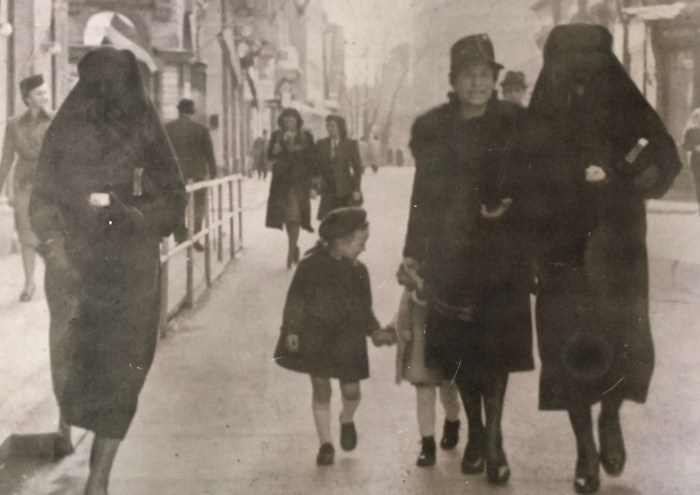
Photograph dating back to 1941 showing a Jewish mother and her two children walking alongside two Muslim women. The Muslim woman on the right of the photograph is covering the Jewish woman’s Star of David symbol which she is wearing on her left arm
The history of the Jewish community in Sarajevo (and the rest of Bosnia and Herzegovina) dates back to 1492, the year when Christopher Columbus discovered the New World, and also the year when the first wave of Jews arrived in Bosnia escaping the Spanish and Portuguese Inquisitions. They were welcomed by the Ottoman Empire ruler of the time, Sultan Bayezid II. In the time when Bosnia and Herzegovina was part of the Ottoman Empire, the Jewish community prospered and were well-treated living peacefully with the Bosnian muslims. They had a large amount of freedom and rights including the right to buy property and land and establish trade in any part of the Ottoman Empire. By 1856, a law was passed within the Empire granting Jews (and other non muslims) full equality. The Jewish community continued to flourish during the subsequent Austrian-Hungarian Empire rule until the beginning of World War One. The rise of Nazism and the Second World War caused many Jews to flee Sarajevo and Europe. By 1940 there were around 14,000 Jews in Bosnia of which 10,000 were in Sarajevo. When former Yugoslavia was invaded by the Nazis in April 1941 most of the remaining Jewish population were deported to Auschwitz or concentration camps in Croatia. After the war, most of the Jewish survivors emigrated to Israel. Today only about 1000 Jews are living in all of Bosnia and Herzegovina. If you have some time, I recommend a visit to the city’s Jewish cemetery located outside of the city. The local tour agency Funky Tours combine a visit to the Sarajevo Tunnel Museum with a visit to the cemetery.
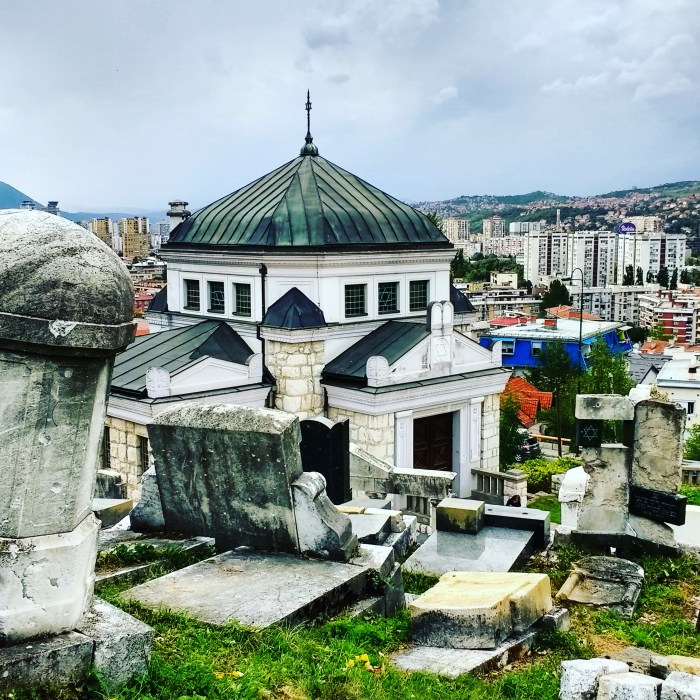

Photographs from Sarajevo’s Jewish cemetery. You can see the effects of the 1992-5 Bosnian War from the shelling marks on the gravestones
The western part of the city is full of elegant and ornate buildings dating back to the era of the Austrian-Hungarian empire hand in hand with austere, brutalist architecture from the post WW2 communist Tito years. If you look closely, you may notice many buildings still scarred by intense shelling when Sarajevo was under siege during the Bosnian War from 1992-5. You may also see shelling scars on the streets you walk on. Some of these scars are painted red and known as ‘Sarajevo Roses’ marking the location where civilians died from mortar explosions during the war.

Architecture dating back to the time of the Austrian-Hungarian empire

Brutalist architecture in the city

Scars from the 1992-5 Bosnian War
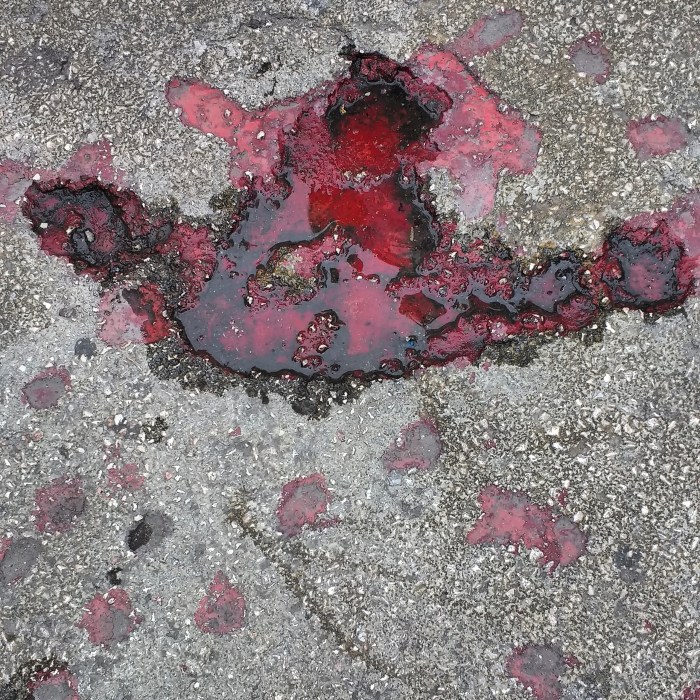
‘Sarajevo Roses’: red painted street scars from the war marking the locations where civilians died from mortar explosions during the war
On the corner of Obala Kulina Bana street by the main river and Zelenik Beretki street is the Museum of Sarajevo 1878-1918 and the location from where the young Bosnian revolutionary Gavrilo Princip assassinated Archduke Franz Ferdinand who led the Austrian-Hungarian empire. His assassination was the catalyst for the First World War and the collapse of the empire. The museum documents the period of Austrian-Hungarian rule in Sarajevo as well as the assassination featuring photographs of the Archduke with his wife in their car after they were both shot, and original artefacts like the trousers Gavrilo Princip was wearing and the gun he used to assassinate the archduke.
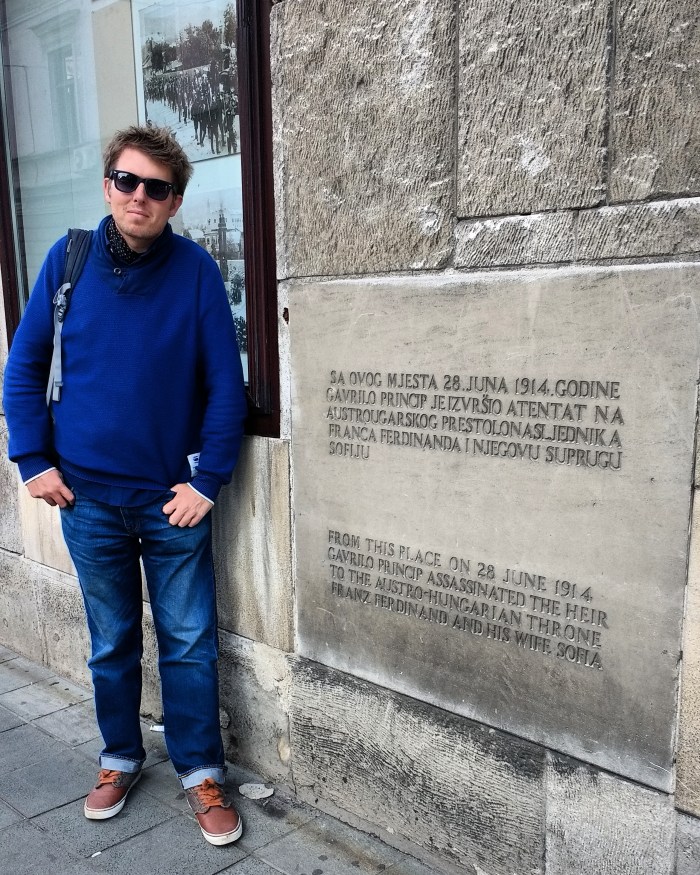
At the location from where Gavrilo Princip assassinated Archduke Franz Ferdinand
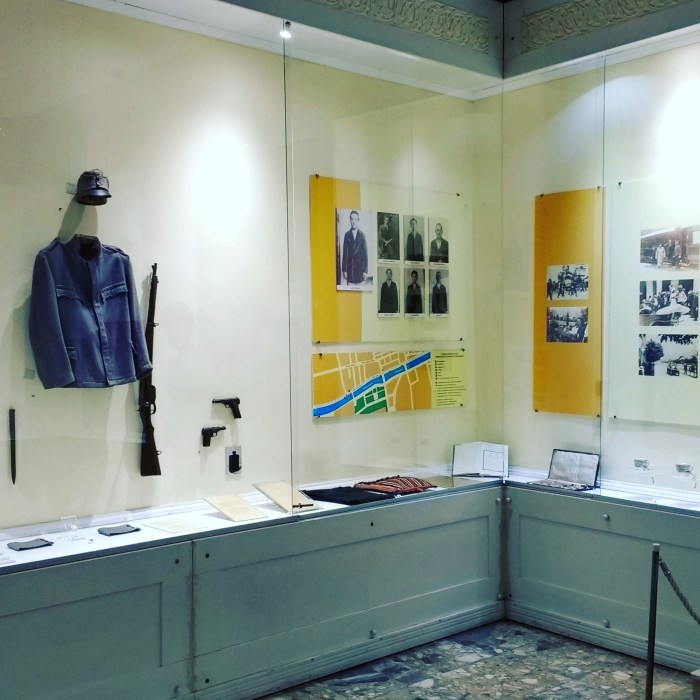
Inside the Museum of Sarajevo 1878-1918 which houses the trousers Gavrilo Princip was wearing and the gun he used to assassinate the Archduke

Original photograph of the Archduke with his wife in their car just after they were both shot
Walking back towards Ferhadija street and west, you will eventually come face to face with the Sacred Heart Cathedral of Sarajevo, which is the largest cathedral in Bosnia and Herzegovina dating back to 1884, only a few years after the city came under Austrian-Hungarian rule. Viennese contractor Baron Karl Schwarz along with supervising architect Josip Vancaš designed the cathedral in a neo-Gothic style.

The Sacred Heart Cathedral of Sarajevo: the largest cathedral in Bosnia and Herzegovina dating back to 1884
Close to the cathedral is the Orthodox Church of the Most Holy Mother of God, which faces Liberation Square. Here you will see locals playing chess like they have all the time in the world; un-restless and un-hurried.
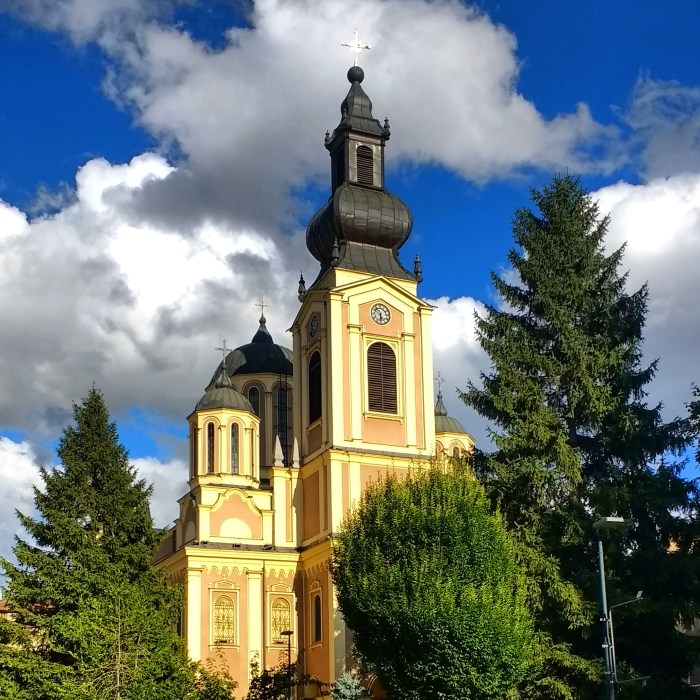
Orthodox Church of the Most Holy Mother of God

Chess on Liberation Square
Not far from the square is the Museum of Crimes Against Humanity and Genocide which the documents the 1990s war in Bosnia and Herzegovina. Amongst the many photos documenting this horrific period there is a display of a dug up mass grave where one can see a human skull, bones and miscellaneous scattered personal items. During the war 34,946 civilians went missing in Bosnia and Herzegovina and more than 5,000 locations containing body parts and mass graves have been discovered across the country. Through conventional methods of clothes/items recognition and more advanced DNA analysis, about 23,000 victims have been identified. Yet around 7,000 people as of today are still missing. Elsewhere there is a display of torture methods and devices used on victims during the war. On one wall there are graphic photographs of victims exposing shocking injuries inflicted on various parts of their bodies and photographs of war refugees cramped and lying on the floor of a building in sleeping bags to keep warm. On another wall there is a framed letter from Arnold Schwarzenegger to a Bosnian heavy weights star who lost members of his family in the war. In the letter Arnold tells him, in spite of all the trauma and destruction from the war, to move forward and take care of his mother. He also mentioned enclosing gifts in the letter. As I near the end of the Museum there is a sculpture of a man made from slices of bread by Mensud Kečo dedicated to the victims of the May 27th 1992 bread queue massacre. 26 civilians were killed and over 100 were wounded as they queued for bread on Ferhadija street.
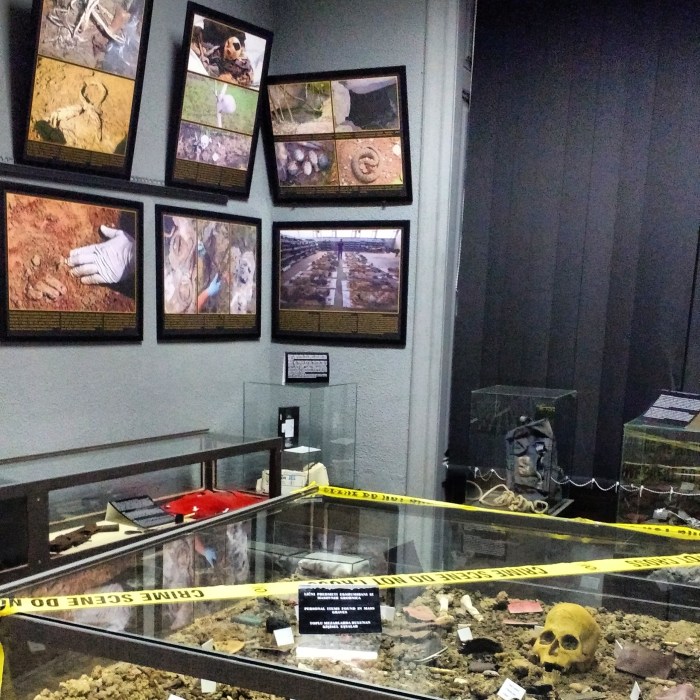
Mass grave display at the Museum of Crimes Against Humanity and Genocide
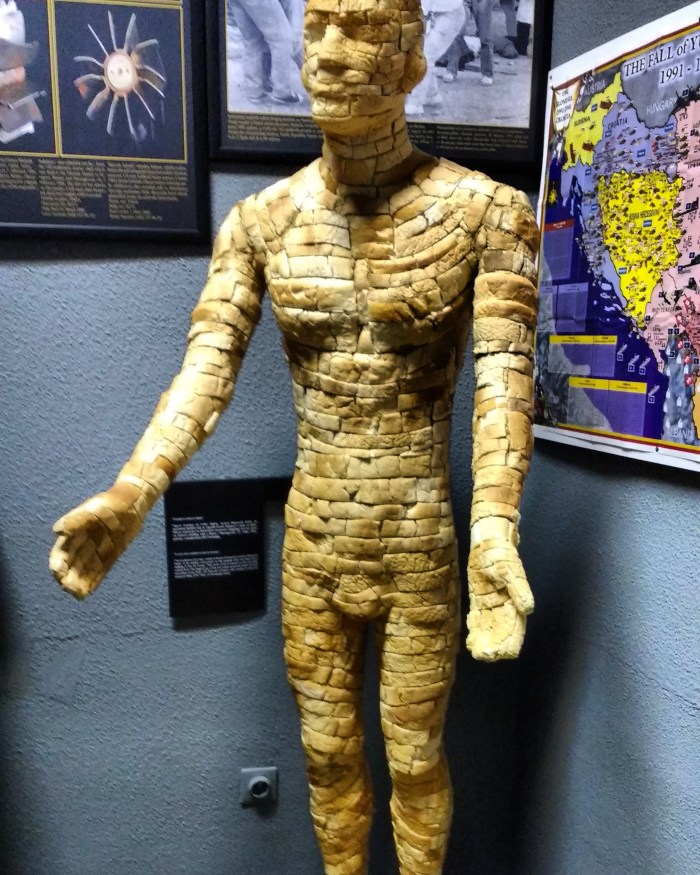
A sculpture of a man made from slices of bread by Mensud Kečo dedicated to the victims of the May 27th 1992 bread queue massacre on Ferhadija street
To gain a good understanding of the Siege of Sarajevo, I embarked on a half day tour with Funky Tours. My guide was a middle aged man named Adnan who experienced and lived through the siege and was injured in his hip by flying shrapnel. With his unique experience he is also a charismatic and engaging guide, and it was riveting to listen to his stories. On this tour we visited the Sarajevo Tunnel located on the outskirts of the city. It was built discreetly by the Bosnian Army to link the neighbourhoods of Butmir and Dobrinja. At the time the entire city was surrounded by the Bosnian Serb army and it was very difficult to escape. Civilians were trapped and the tunnel enabled them to flee and get access to essential humanitarian aid. Today the house whose cellar acted as the entrance to the tunnel has now been transformed into the Sarajevo Tunnel Museum. When we entered the house we walked down the narrow 20 metre length portion of the original tunnel from its entrance. Inside the house there are photographic displays and War artefacts like military uniforms and equipment and also some examples of the humanitarian aid and food staples smuggled via the tunnel.
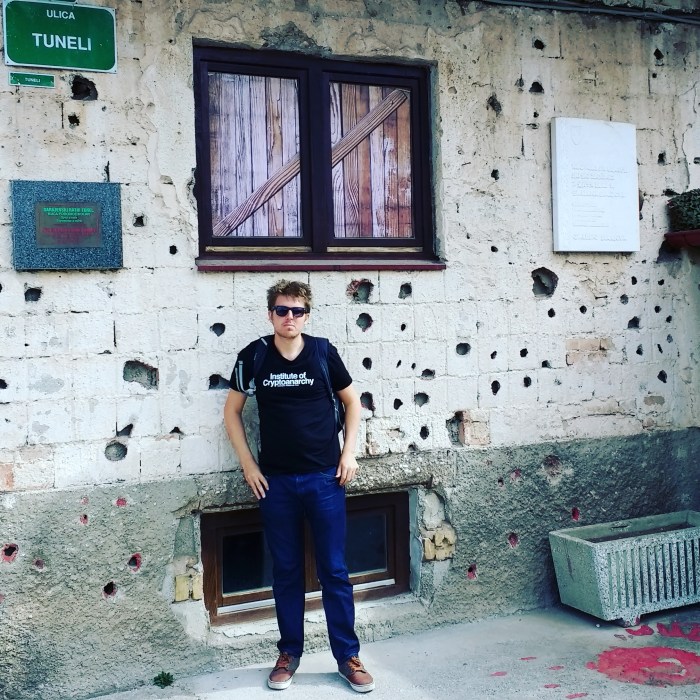
By the Sarajevo Tunnel Museum

Inside the Sarajevo Tunnel
Afterwards, Adnan drove us to the bobsleigh track built for the 1984 Sarajevo Olympics. Eight years later from the start of the Bosnian War, the track was destroyed by the Bosnian Serb Army and also utilised as an artillery position. Today the track is a heavily graffitied relic. One area of the track has been graffitied with the image of a young girl crying wearing a yellow shirt with a flower. She’s holding two signs in each hand. The right sign features the John Lennon and Yoko Ono slogan ‘Give Peace A Chance’ whilst the left sign continues the sentence with ‘For All Kids’.

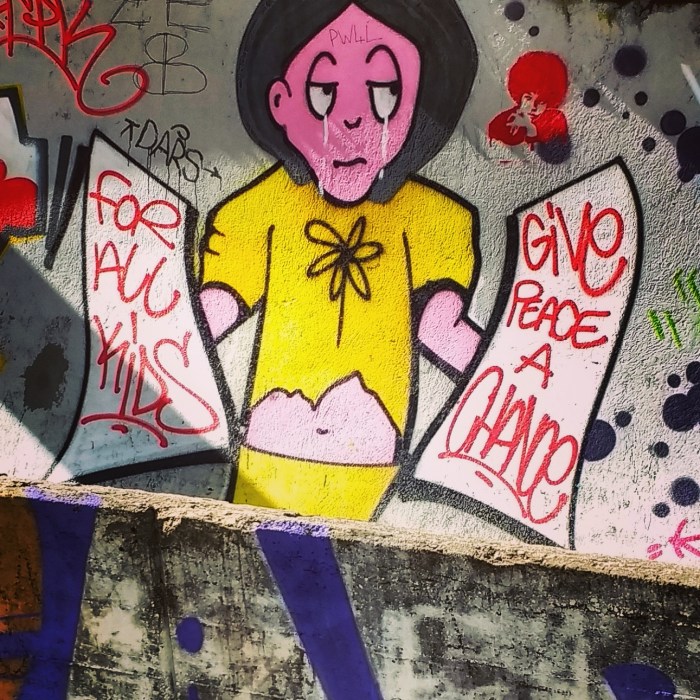
Bobsleigh track photographs

View over Sarajevo
Close by the track we stopped at the side of a mountain road from where we had an incredible vista of the city of Sarajevo and its surroundings. All of the city is located in a valley surrounded by mountains. As magnificent as the scenery is, the heartbreaking truth is that such as setting made it relatively easy for Bosnian Serb Army troops to almost completely surround and lock the city.
Text and photographs by Nicholas Peart
©All Rights Reserved